 | E-mail to Birds Korea |
 | KWBS |
in the Region
 | The Oriental Bird Club |
 | BirdLife International (Asia) |
- Have you seen one of the "Key Species" we are collecting data for?
- A request for data on sightings of Ruddy Shelducks.
Socheong Island, May 26 - 31, (far NW of South Korea: 250 km east of the Shandong Peninsula, ca 30km southwest of the North Korean coast)
An outstanding end to May with news today of the country's first Chinese (Song) Thrush Turdus mupinensis, flushed from cover on the island by one of 15-20 Gray's Grasshopper Warbler also present!
A very scarce migrant through Beidahe, there is apparently just one documented record of this near-threatened species outside China: in East Tonkin, in March 1989 (Craig Robson).
After sunny conditions between May 26th and 28th, 40 mm of rain fell on the 29th, clearing by mid-morning of the 30th. Amongst 94 species logged on the island during the period, main highlights included a single highly unseasonal Cinereous Vulture present throughout, a Black Drongo on 26th; 2 lagopoda Northern House Martin, 3 Thick-billed Warbler and a female Russet Sparrow on 27th (the latter also on 28th); up to 25 Asian House Martin on 29th; a House Swift, at least 35 Tiger/Thick-billed Shrike, an unidentified bradypterus Bush Warbler, single female-type Asian Paradise (second record for South Korea?) and first summer male Black Paradise Flycatchers, 4+ Chestnut-flanked White-eye and a drongo sp (either Spangled or Black) flying out to sea all on the 30th; and on the 31st, the Chinese (Song) Thrush (feeding alongside a first year male Siberian Thrush), along with 15-20 Gray's Grasshopper and 1 singing Thick-billed Warbler.
As many of the records contribute significantly to an understanding of late spring migration through South Korea, we will be posting a longer report with extra details and images within the next few days.
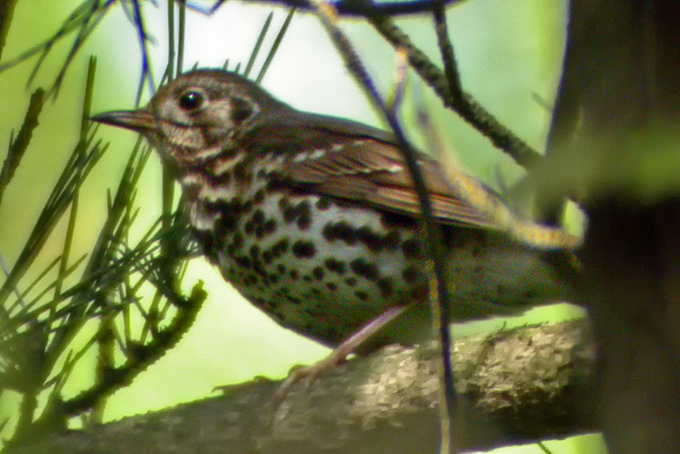
Seosan, May 27
News on Kim Hyun-tae's site of this stunning Pheasant-tailed Jacana at Soesan. Listed in Lee, Koo, and Park (2000) as a vagrant, Pheasant-tailed Jacana is actually recorded annually. There are many more excellent photos online at his site: go to home.megapass.kr...
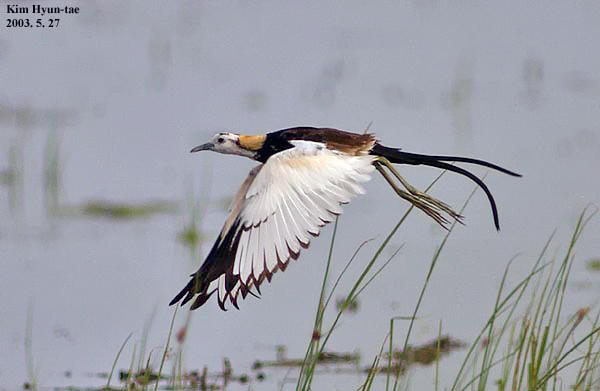
Socheong Island, May 26, (far NW of South Korea: 250 km east of the Shandong Peninsula, ca 30km southwest of the North Korean coast)
1 Pomarine Skua from the ferry (not listed in Lee, Koo, and Park (2000), the first documented record was also from a ferry in the Yellow Sea on 23rd May last year).
A sunny day after heavy rain:1 Black Drongo continued the run of records of this national rarity, 1 Blyth's Pipit, 10 Black-browed Reed Warbler, 8 Brown Shrike, 1 Tiger/Thick-billed Shrike, 25 Chinese Sparrowhawk, 8 Grey-faced Buzzard, 1 Cinereous Vulture, 30 Pale-legged Leaf Warbler, 7 Yellow-rumped Flycatcher, 15 Grey-streaked Flycatcher, 1 Eye-browed Thrush, and 1 Chinese Pond Heron.
Geum River Barrage and Okku Saltpans, Mangyeung River/Saemangeum, May 18
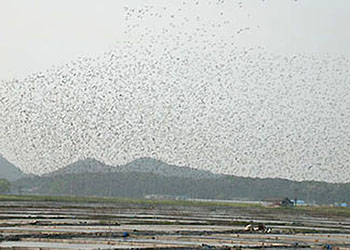
At the Geum, ca 3 000 shorebirds present before high tide, mostly comprised of Dunlin (ca 2 200), with ca 450 Terek Sandpiper and 2 or possibly 3 Nordmann's/Spotted Greenshank.
At Okku, ca 12 000 shorebirds (comprised largely of ca 7 000 Great Knot and 3 000 Dunlin), flushed repeatedly by 2 hunting Northern Hobby. Other species of note included ca 500 Lesser Sand Plover, 250 Terek Sandpiper, 1 Nordmann's Greenshank and 1 (distant) summer-plumaged Spoon-billed Sandpiper.
Hwado, Ganghwado, May 17
A female Watercock seen in a ricefield from the slowly-moving bus (between Gimpo city and Ganghwa) was the first good bird of the day. A few Black-naped Orioles, Indian and Common Cuckoos, Forest Wagtails (2), and Siberian Blue Robins (4-5) present at Manisan. In the town at Hwado a starling flew by in the company of 2 Grey (White-cheeked) Starlings: probably a Common Starling (which is rare in Korea) it was notably smaller and more lightly built, and appeared to have a dark rump, but was only seen for probably about 1 s before disappearing behind a hill where it couldn't be located.
Namhansanseong Provincial Park
Not much of particular note, but 2 singing Hodgson's Hawk-cuckoos were the first of the year.
Eocheong-Saemangeum/Mangyeung River, May 17
With continuing anticyclonic weather little to report on Eochong from the morning, apart from a Blyth's Pipit, half-a-dozen singing Arctic Warbler, the reapparance of the long-staying Citrine Wagtail (first seen on May 8), and at least 5 Black Drongo and 8 Chinese Pond Heron still. On the ferry back to the mainland, only ca 50 Streaked Shearwater, but 8 Ancient Murrelet and 25 Red-necked Phalarope (along with 3 migrant Striated Heron, 2 Cattle Egret and a dozen hirundines).
On the Mangyeung river (Saemangeum), one of the high tide roosts contained at least 3 600 Great Knot, 1 200 Dunlin, 700 Lesser Sand Plover, ca 400 Red-necked Stint and ca 30 Broad-billed Sandpiper. In addition, 1 Pectoral Sandpiper and 1 Nordmann's/Spotted Greenshank, along with small numbers of Far Eastern Curlew and variegatus Whimbrel.
Korean-flagged Turnstone in Taiwan
Taiwan resighting code: R181; Leg Flag Observation Report (2003-No.33)
Name of Observer(s): Chung-yu Chiang of TWSG (Taiwan Wader Study Group)
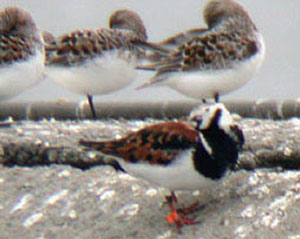
Taiwan Waders Study Group.
Date and time of the Observation: 2003/05/16
Location: Han-Pao, Changhua County, Taiwan (24deg 2min 0sec N, 120deg 21min 0sec E)
Species: Ruddy Turnstone Arenaria interpres
Number of Flagged birds: One
Age/Sex: Adult Male
Marking: Right: Tibia (White Colour flag)/ Tarsus (Orange Colour flag); Left : Tibia (None)/ Tarsus (Metal ring)
(See Flag protocol for details of the flag colours used in each participating country.)
Eocheong Island, May 16
Despite largely sunny conditions, with a light northeast-northwest wind, and maximum temperature of ca 22+ C, birds seemed to arrive in small numbers throughout the day. New birds through included ca 45 White-throated Needletail (with 30 feeding at midday at tree top level on a swarm of flying ants, together with a few Pacific Swift, 5+ Asian House Martin and 7 Broad-billed Roller...), ca 5 Brown Shrike, 1 late Brown Thrush, at least 2 Daurian and one Chestnut-cheeked Starling, 2 Blyth's Pipit and increasing numbers of Grey-steaked Flycatcher. Also, at least 8 Black Drongo, 6 Chinese Pond Heron, 1 White-breasted Waterhen and the elusive Black-headed Bunting were all still present (for more on this sighting, go to Black-headed Bunting).
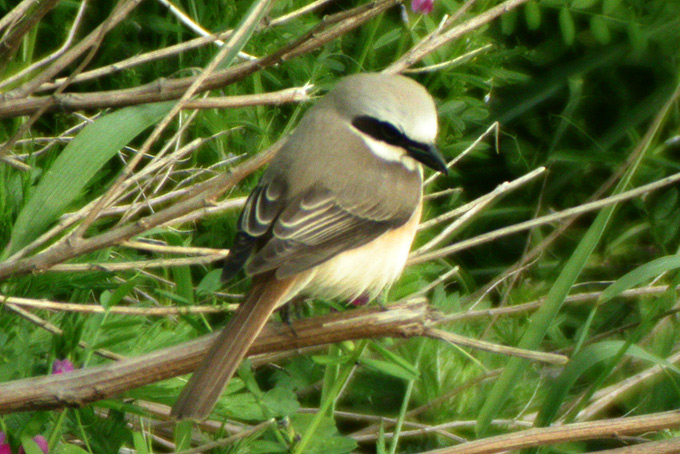
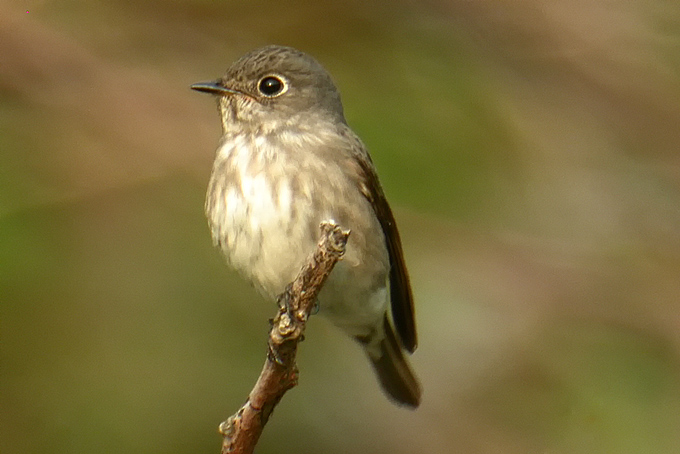
Eocheong Island, May 15
Although the migration season now appears to be well past its peak here, four hours of light rain at dawn dropped a few migrants, including the spring's first Dark-sided/Sooty Flycatcher (2), 3 Japanese Yellow Bunting, and ca 30 Broad-billed Roller (with 27 feeding together in the early afternoon). In addition, 3 low-flying Crested Honey Buzzard, and a new male-type Citrine Wagtail (seen twice, only in flight) were logged, along with ca 8 Black Drongo and 6 Chinese Pond Heron still. Bird of the day, however, was a male (first summer?) Black-headed Bunting, in with a small mixed bunting flock (containing 3Yellow-breasted, 2 Little, 2 Black-faced and 1 Japanese Yellow). Proving very elusive (and extraordinarily camera-shy), this is believed only the second record of Black-headed Bunting in Korea - after the first on Gageo Island in November 2000.
For more on this sighting, go to Black-headed Bunting

Eocheong Island, May 14
A relatively quiet day, but still 11 Black Drongos. Also 4 White-throated Needletails and an Asian House Martin.
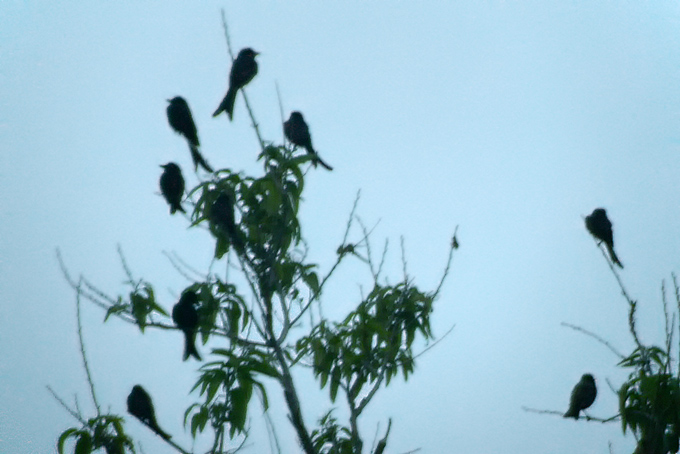
Eocheong Island, May 13
Continuing hot and bright until the evening when cloud started to thicken, with very little movement noted during the day. Still reasonable numbers of flycatchers present (especially Brown, Grey-streaked and Mugimaki), as well as a good spread of buntings, the first female Tiger/Thick-billed and Brown Shrikes of the spring, and at least 11 Black Drongo and ca 8 Chinese Pond Heron.
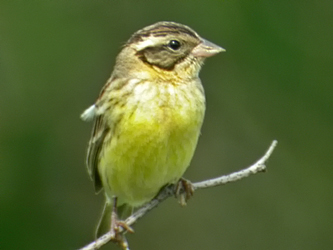
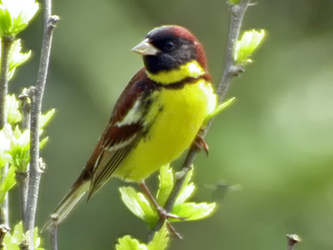
DaeHeoksan Island, May 13
6 Black Drongo.
Upo Wetland, May 11 & 13
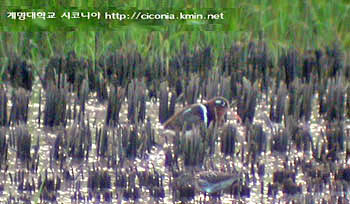
2 Painted Snipe and 2 Chinese Sparrowhawk observed: the hope is that both these species will nest at Upo this year.
Eocheong Island, May 12
Continuing anticyclonic conditions meant few new arrivals (largely limited to 8 Broad-billed Roller, another singing Lanceolated and 4 Black-browed Reed Warblers, fair numbers of Yellow-browed and 3+ Raddes' Warbler, a single male Chestnut-cheeked Starling and ca 100+ Black-faced Bunting), and rather more in the way of departures. In addition to the continued presence of the Citrine Wagtail and ca 8 Black Drongo, interest was provided by a small movement of Chinese Sparrowhawk (with 35 north in one hour at midday, including one group of 27), and small numbers of other raptors.
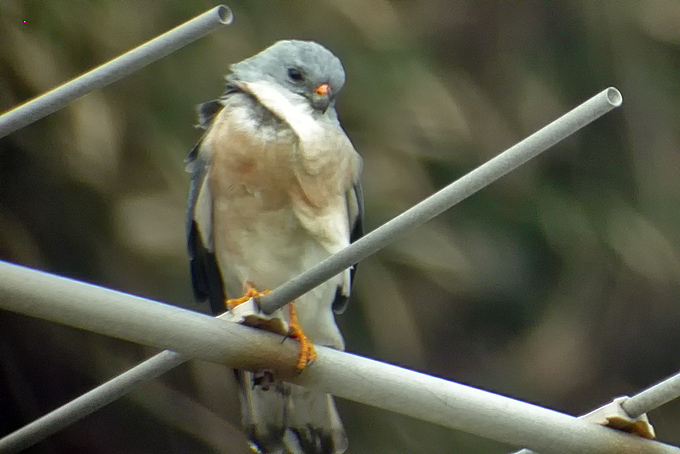

Hong Island (north of Gageo Do), May 12
1 Black Drongo, 1 Hair-crested Drongo.
Eocheong Island, May 11
Continuing anticyclonic, clear, and warm, with a light northerly wind. Little obvious change, with very slight increases in some species (e.g. Black-faced and Yellow-breasted Bunting, and now ca 20 Mugimaki and at least 3 Narcissus Flycatcher), and the absence of others (e.g. the Black Bittern and Northern House Martin). Best for the day were therefore the White-shouldered Starling and at least 10 Black Drongo still (watched in one group going to roost), ca 10 Chinese Pond Heron, single Japanese Yellow Bunting and Arctic Warbler (typically a rather late migrant) and 1, or more probably 2, Blyth's Pipit. Finally late in the day, the re-appearance of the Citrine Wagtail last seen on May 08.
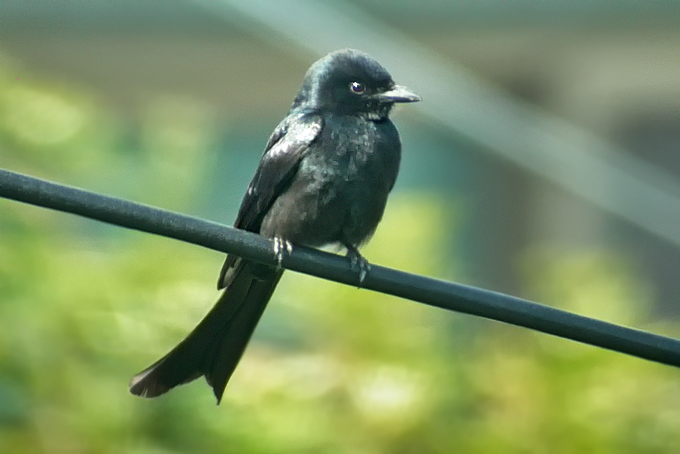
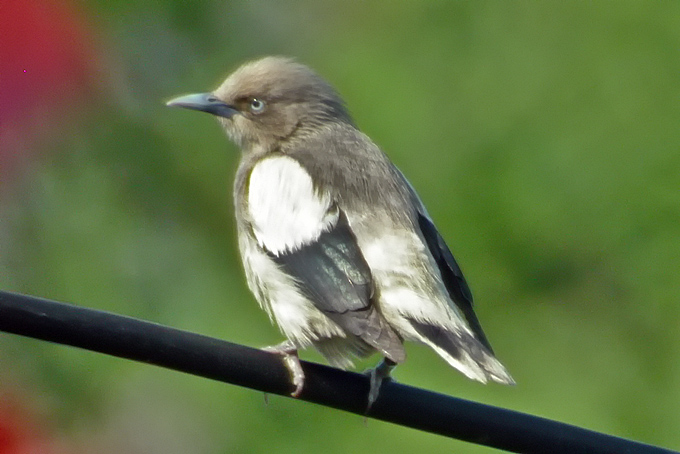
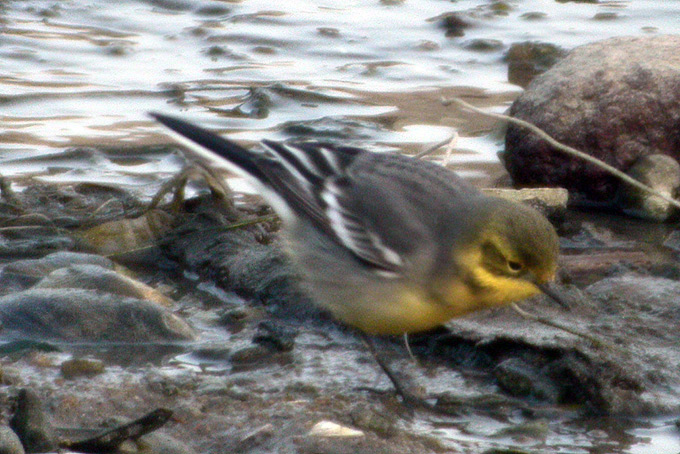
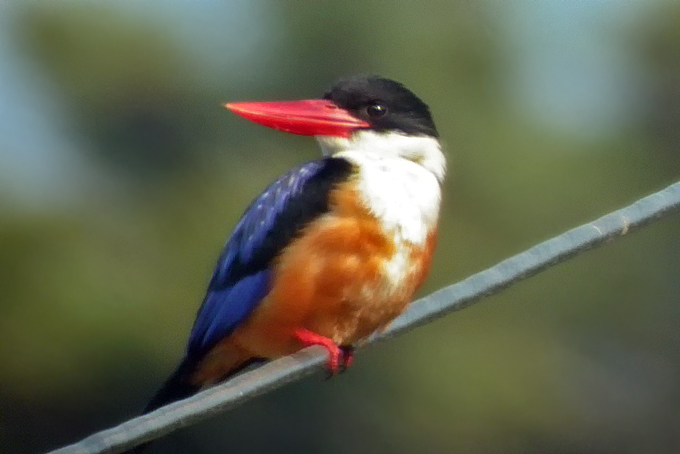
Hong Island (north of Gageo Do), May 10
1 Black Drongo and 2 Hair-crested Drongo. These are probably just the second documented records of Hair-crested Drongo for the country, and we're very grateful to Park Jong Gil for permission to post his images.
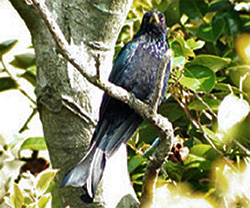
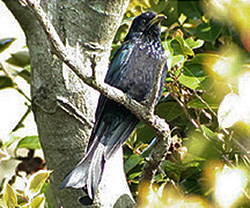
Gunsan, May 10
On May 10th I spent a couple of hours watching 3 Black Drongos hawking insects above a swampy area at a distance of 100' to 200' in good light. The birds were seen at paddy-level on the North side of the hill which is located just to the North of the civilian passenger terminal at the Gunsan Airport. Given that Lee, Koo and Park report only 2 prior records, I am trying to get this observation on file (I notice from your web-site that you are seeing them, too).
I saw one there early morning May 11th, but it was not in evidence when I left. Also on the 11th 4 Chestnut-cheeked Starling seen very well.
Eocheong Island, May 10
Anticyclonic conditions persisting, though with only moderate visibility and a promising light NW wind. Small numbers of birds were on the move most of the day, with the spring's first Thick-billed/Tiger Shrike, the spring's second Lanceolated Warbler, and perhaps the spring's last Red-flanked Bluetail, as well as single new Chinese Pond Heron and White-breasted Waterhen (the latter trying to hide amongst chickens and domestic ducks in the island's only chicken-run). These were supported by ca 50 flava wagtails (mostly taivana), moderate numbers of flycatchers (with both Yellow-rumped and Mugimaki just reaching double figures, and at least 2 Narcissus Flycatcher), and hirundines, including 110+ Red-rumped/Lesser Striated Swallow. The latter flock also contained 5 Asian House Martin, and the only "new" rarity of the day, another lagopoda Northern House Martin (the third individual of the spring on Eocheong so far - see our article for details and photos of the first two birds). Other highlights included the (brief) reappearance of the male Black Bittern, the continued presence of the same 4 species of starling, and at least 10 Black Drongo going to roost near the reservoir.
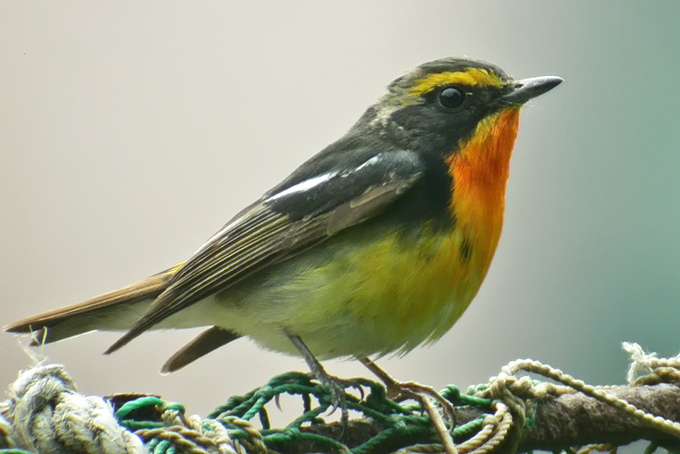
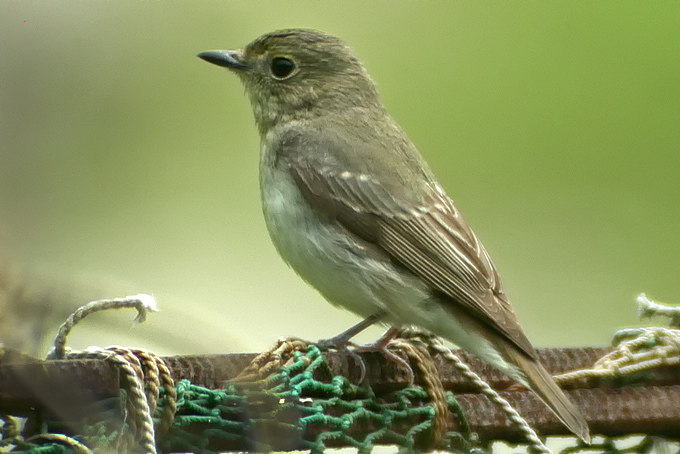
Eocheong Island, May 9
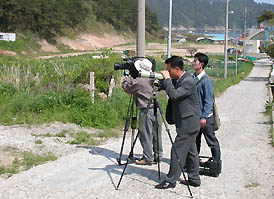
Eocheong's latest rarities! © Nial Moores.
Limited time spent in the field (due to the presence of a news TV team aiming to introduce Eocheong's value to birds and birdwatchers...) suggested that many of yesterday's migrants had moved on in clear, anticyclonic conditions, though still 1 Japanese Yellow Bunting and at least 3 Pallas's Reed Bunting were present in the village, along with the more typical Little, Black-faced, Chestnut and Yellow-breasted Buntings. Also, the White-shouldered Starling, ca 8+ Chinese Pond Heron and at least 5 Black Drongo were still present, along with a new female Russet Sparrow, Chestnut-cheeked Starling, and a female Daurian Starling (the second of the spring).
Outstanding highlight of the day was found late in the afternoon: a single Himalayan Swiftlet, found feeding in amongst ca 50 hirundines and Pacific Swift, along with a single Little Swift. 'Scoped well for 90 minutes (though at ca 150-200 m range) the bird appeared about 30% smaller than Pacific Swift, bow-winged, with a faintly paler rump band, and a darker capped effect. First recorded in South Korea on Gageo Island in May 2001 (see our New Records paper), there were several records on Eocheong in 2002, raising questions about its actual distribution, both within Korea and the broader region.
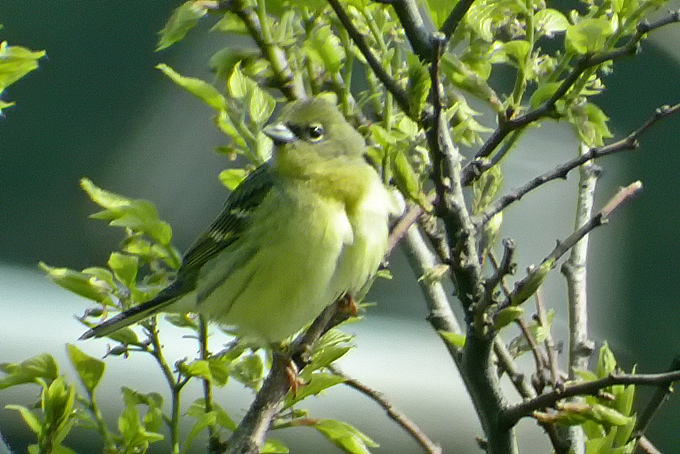
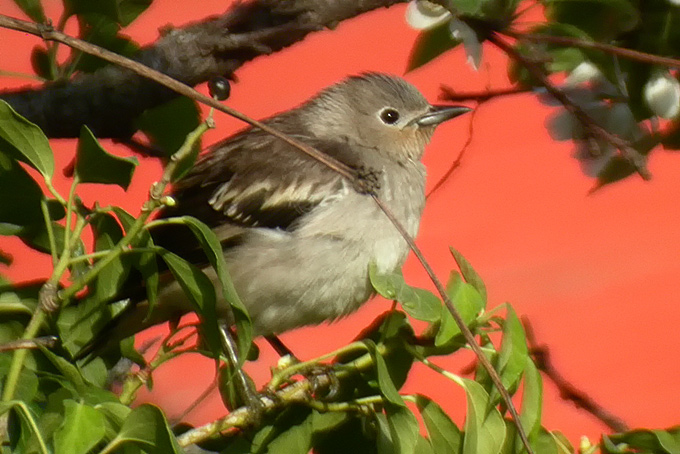
Eocheong Island, May 8
Largely overcast overnight, and bright and mostly sunny throughout the day, with a force 3-4 northwest-northeast wind.
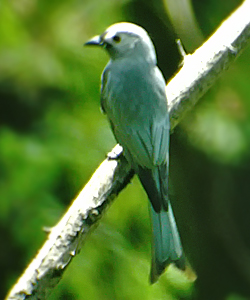
A memorable day, with over 100 species logged, and significant arrivals and departures taking place from dawn through till ca 1600. Most numerous grounded migrants were buntings, with over 300 individuals of 11 species, the majority comprised of Little (150+), Black-faced (75), and Chestnut (40), followed by flava wagtails (ca 75-100), hirundines (150+ of 4 species), Ashy Minivet (ca 75) and Black-naped Oriole (40+). In addition to a new high of 9 Chinese Pond Heron, there was 1 White-breasted Waterhen, 1-2 Blyth's Pipit and the White-shouldered Starling still, and new spring high counts of Chinese Sparrowhawk (15-20), Richard's Pipit (15+) and Oriental Pratincole (6), as well as the first (belated) Common Cuckoo of the spring, and the second and third Pechora Pipit.
The rarest species at the global level recorded was Chinese Egret, with at least 7 (probably 8) present in the harbour.
Among a long list of Korean rarities were yet another Citrine Wagtail (the fourth on Eocheong this spring), the Ashy Drongo still (though remaining highly mobile and elusive), and the fourth or so national record of Black Bittern - a male.
Most exceptional species for the day, however, was Black Drongo, with an incredible arrival of at least 15 individuals...this of a species with less than 10 prior records nationwide!
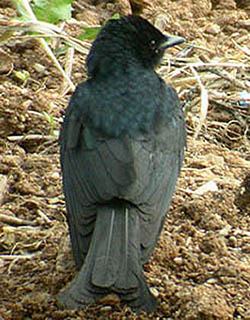
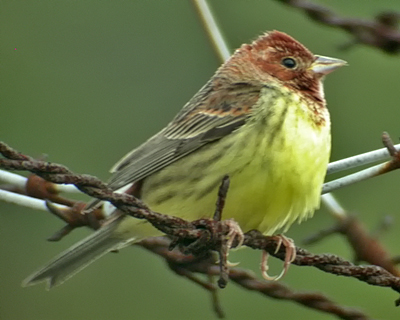
Eocheong Island, May 7
Overnight becoming clearer with fog banks, before another belt of rain arrived at 0700 am; then remaining foggy all day (maximum visibility ca 200 m), with occasional heavy drizzle, and a strengthening southerly wind. Surprisingly few birds in the morning, though a steady arrival of migrants took place throughout the day, apparently peaking late in the afternoon.
The only first for spring was an early Lanceolated Warbler, while other good birds included a presumed new Oriental Pratincole, 1 White-breasted Waterhen, ca 6 Chinese Pond Heron, 2 Blyth's Pipit, the male Chestnut-cheeked Starling and ca 3 Japanese Yellow Bunting still.
Amongst arrivals, 5 Brown Shrike, 3 Forest Wagtail and 30 flavaWagtail (including at least 5 taivana) were new spring 2003 high counts, along with ca 20 Chestnut Bunting - many of which formed part of a 6-species 50-strong mixed flock of buntings that dropped in at the lighthouse at 5 pm. These were then followed in quick succession by the three best birds of the day: a Hume's Leaf Warbler heard calling, a male Amur Falcon seen briefly as it came in off the sea, and an Ashy Drongo (apparently of subspecies leucogenis or less likely salangensis), which perched briefly before disappearing into the dense fog (all Nial Moores).
Ashy Drongo has been recorded at least three times previously in Korea, according to Lee, Koo and Park (2000): once in Pyeonganbuk-Do, DPRK (October 1961), and twice on Gageo island, Jeollanam Do (May 2000 and October 2001: pers obs.).
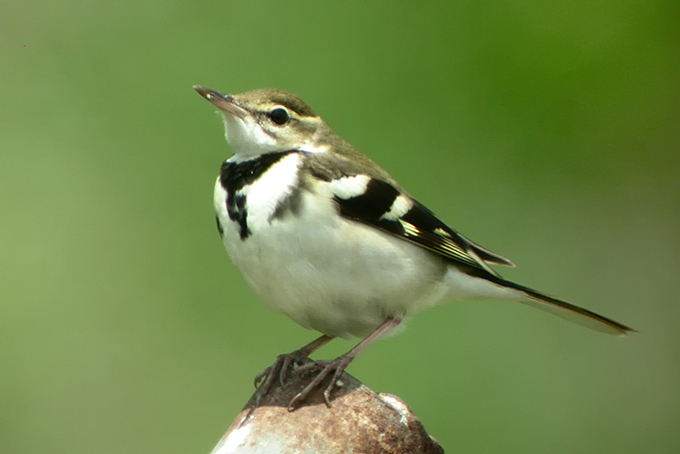
Gageo Island, May 6 - 7
1 Citrine Wagtail, 11 Little Whimbrel.
Eocheong Island, May 6
Rain from 4 am until after dark, heavy at times, with visibility down to 100 m at worst ensured that an increasing number of migrants, of both "Japanese and Chinese type", were both grounded and difficult to find through the course of the day, with most unusual perhaps being a Northern Bittern. A broad range of species was recorded, with the White-shouldered Starling, 2 White-breasted Waterhen and ca 8 Chinese Pond Heron still and e.g 6 Marsh Sandpiper along with 2 Oriental Pratincole, the unidentified harrier still (thought by 3 observers most likely to be a Pied on structure), 3 White-throated Needletail and 2-3 Asian House Martin, 2 Blyth's Pipit, ca 30 Brown, 15 Grey-streaked, 10 Yellow-rumped, ca 8 Mugimaki, 7+ Blue-and-White, and 1 male Narcissus Flycatcher, 10+ Siberian Thrush, and ca 30 Tristram's and 3+ Japanese Yellow Bunting.
Eocheong Island, May 5
Clear skies until mid-afternoon meant very few birds present in the morning, with only the White-shouldered Starling, White-breasted Waterhen and now 8 Chinese Pond Heron remaining of the most notable birds, with the addition of a Crested Honey Buzzard and a Black-browed Reed Warbler (both first for the spring). In the late afternoon, a few birds started to arrive along with increasing cloud and mist (associated with rain-bearing systems both to the north and the south), including a Blyth's Pipit (KS), a Northern Hobby (first of the spring), a harrier sp., up to 10 Ashy Minivet, 3 Asian House Martin, ca 5 male Yellow-rumped Flycatcher, 3 Japanese Yellow Bunting and a full adult male Common Rosefinch (the latter surprisingly scarce in South Korea).
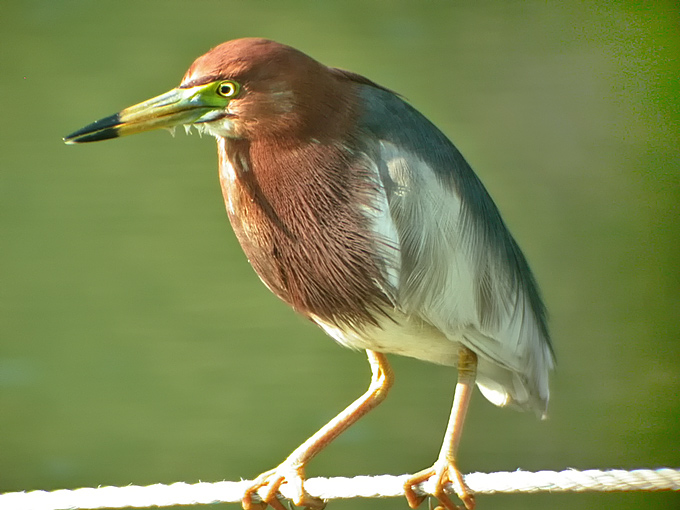
Ok San Dong, in Gyeong San down the Nam Cheon river towards the Gyeong San water treatment plant, May 5
At around 09:30 a flock of nine Crested Honey Buzzards seen soaring above the river.
[Nial Moores: This record is interesting in that fewCrested Honeys have come through Gunsan/Eocheong so far: most seem to go across the Shandong into the Gyeonggi region...]
Geum River, May 5
Geum River to the huge sandbar that forms in the kilometer and a half or so just below the dam and extends almost to the eastern edge of the city.
One bird seen here was an Asiatic Dowitcher (identified by the complete lack of white over the eye, the shorter thicker appearance of the body and thicker, stouter bill as compared with Bar-tailed Godwits nearby). It was watched for about a half hour in excellent light. Near the dam at the eastern-most end of the sandbar was a flock of about 100 Grey Herons, whch included a Black-faced Spoonbill: the bird was located near a shore where several hundred people were walking, flying kites etc.
All in all a very nice trip, but knowing that this great area is being systematically destroyed made it distinctly bittersweet. The loss of Saemangeum will be a major tragedy to those of us that have an interest in birds, fish, mollusks and everything else natural, not to mention to the fishing industry of the Gunsan area, an industry that will be dead when the mudflats are filled...
Geum River, May 4
Geum River area from the city downstream to the west, the filled area at the western end of the peninsula, the mud flats to the south of the peninsula end and west of the airport, and the Okku saltpans area.
The most interesting birds were 2 rather late female Greater Scaup (found in the Geum River just west of downtown Gunsan), a Green Sandpiper seen on the mudflats west of the airport, about 200 Great Knot gathering on the mudflats near the Okku saltpans as the tide rose. Also there, about three Far Eastern Curlews with the Eurasian Curlews, Bar-tailed Godwits, Great Knots, and Whimbrels. Unfortunately neither Red-necked Stints nor Spoon-billed Sandpiper were found.
Another seemingly late record was of a Japanese Quail flushed from roadside vegetation.
Highlights from Deokjeokdo (west of Incheon), May 4
Many of the flycatchers seemed to have left (only 1 Yellow-rumped, 2 Mugimaki, and 1 Blue-and-white), but a large wave of warblers moved across the foggy East side of the island, including over 200 Yellow-browed, 20+ Arctic, and 15+ Eastern Crowned Willow.
Highlight of the day was a Jack Snipe, seen well, but briefly as it flushed from underfoot along a trail in a scrubby clearing.
Other migrants included similar numbers of Indian and Oriental Cuckoos; Olive-backed Pipit (40+); Rufous-tailed Robin (15+); Siberian Rubythroat (1 fem); White's Thrush (15+); Siberian Thrush (1 fem; in a different area from Saturday's birds); Pale Thrush (2); Dusky Thrush (1); Asian Stubtail (4); 24 Common Crossbills; and 12 Black-naped Orioles. Buntings seemed scarce over the whole weekend with the exception of possibly 150 Yellow-throated spread out across the island. Otherwise only 2 Tristram's, 1 Chestnut, and 4 Black-faced.
Highlights from Deokjeokdo (west of Incheon), May 3
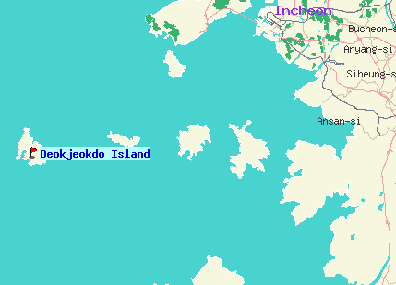
Migrants included Chinese Sparrowhawk (8); Indian (8+), Oriental (6), and Little (1) Cuckoos; Ashy Minivet (4); Rufous-tailed Robin (1); Siberian Blue Robin (8+); White's Thrush (10+); Pale Thrush (6+); Siberian Thrush (2 -- 1 pair); and Yellow-rumped (5), Mugimaki (15+), Blue-and-white (1), Sooty (2), Grey-streaked (1), and Asian Brown (4) Flycatchers.
Eocheong Island, May 4
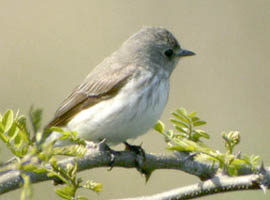
Continuing anticyclonic, with partially cloudy skies clearing, and many birds departing. Several of the excellent species were still left over from the past few days (including single Citrine Wagtail, White-shouldered and Daurian Starlings), and were supported by e.g. 6-7 Chinese Pond Heron, 1 White-breasted Waterhen and the Baillon's Crake, Brown Thrush and Grey Thrush at the reservoir still. However, there were no Broad-billed Roller or Black-capped Kingfisher logged all day, and most migrants were present in only very small numbers. Easily best for the day therefore was a calling Hume's Leaf Warbler (Nial Moores), presumed a decidely scarce species in South Korea, while Radde's Warbler also reached a new spring high of at least 8 individuals.
Okku saltpan in Saemangeum tidal flat, May 3
Without an especially high tide most shorebirds stayed on a distant shoreline. Nevertheless, 1 Spoonbilled Sandpiper was found (in with 100 Red-necked Stint), as well as 2,000+ Dunlin, 350 Great Knot, 60 Grey Plover, 300 Bar tailed Godwit, 50 Whimbrel, 27 Far-eastern Curlew, and 7 Eurasian Curlew. An additional highlight was 6 Black-faced Spoonbill (and 1 White Spoonbill).
Eocheong Island, May 3
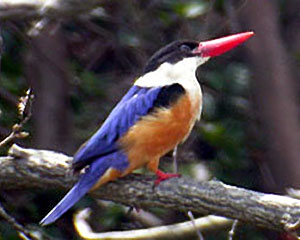
Continuing anticyclonic and largely clear (and quiet) until midday, when thin cloud started to form (and a small arrival took place). A range of interesting species included 2 Ancient Murrelet roosting up near the lighthouse, 2 Brown Hawk Owl watched coming in off the sea, and another Two-barred Greenish Warbler (all BP and BJ).
In addition, the Citrine Wagtail and Daurian Starling were both still present, along with the Oriental Pratincole, and the regular quartet of "Japanese migrants": 2-3 Brown Thrush, and single Grey Thrush, Chestnut-cheeked Starling and Japanese Yellow Bunting. At the reservoir, at least 6 Chinese Pond Heron, joined in the evening by 2 White-breasted Waterhen and the first Baillon's Crake of the spring. Arctic Warbler was also new for the spring, while new peak counts for 2003 included 8-10 Black-capped Kingfisher, ca 35 Broad-billed Roller (31 counted in one flock) and ca 40 Asian Brown Flycatcher.
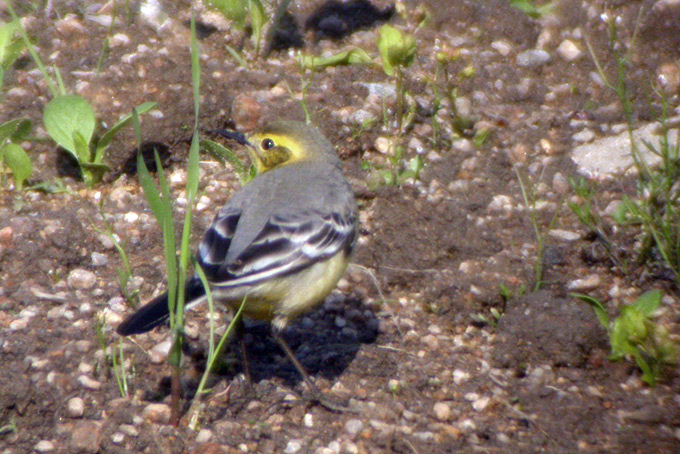
Eocheong Island, May 2
Continuing clear, anticlyclonic conditions encouraged a continuing reduction in numbers of birds. Highlights for the day included a female-type Citrine Wagtail, and the White-shouldered Starling (the ring has LON and RT at least written on it), Oriental Pratincole and White-breasted Waterhen(KS) still. In addition, new for the spring were ca 5 Japanese Grosbeak and a singing Forest Wagtail, while other good species included at least 6 Chinese Pond Heron, 20-30 White-throated Needletails, 2+ Japanese Yellow Bunting and the first small groups of Chestnut Bunting (ca 10 present), 1 male Grey and 1 male Siberian Thrush: the latter only the second of the spring so far.
Eocheong Island, May 1
Clear and hot during the day, with a major departure of many migrants, including both the Red-breasted and the Ferruginous Flycatcher. Despite the relatively small number of birds remaining, still ca 94 species logged in total, including all 4 species of starling still, with a male Chestnut-cheeked, the female Daurian and the male White-shouldered all present in the same area in the evening (the White-shouldered showing a metal ring on its right leg: where might this have been banded?). Spring highs included approximately 25 Grey-faced Buzzard, 22+ White-throated Needletail and ca 50 Black-naped Oriole, while the first Grey-streaked Flycatcher(4) of the spring were also recorded in the evening. Other highlights included 1 Little Whimbrel (heard only) and 1 very confiding Oriental Pratincole, 1 White-breasted Waterhen at the reservoir (KS), 1 Greater Short-toed Lark still, 1 Two-barred Greenish Warbler and a male Russet Sparrow (Nial Moores).
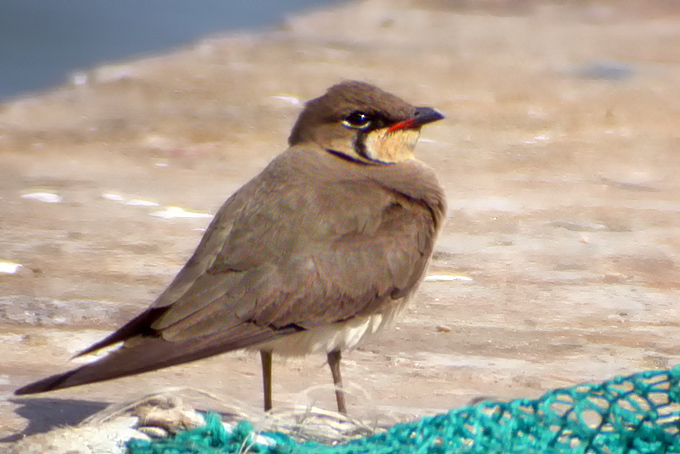
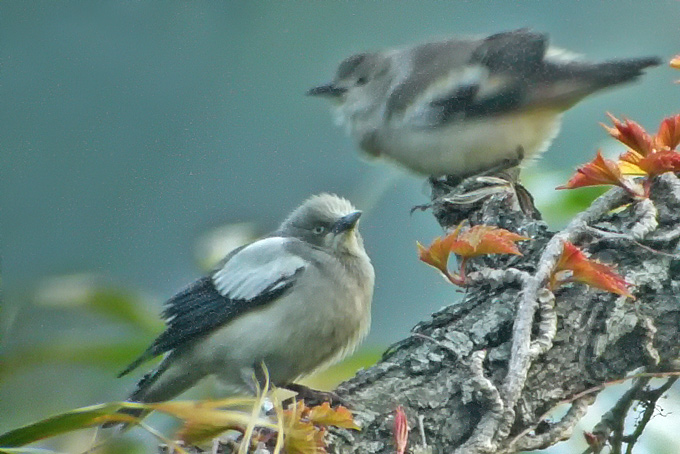
Daehuksan Island, May 1 & 2

© Park Jong Gil.
1 Isabelline Wheatear - a first record for Korea, 1 Black Drongo, and 2 Common Rosefinch.
We're very grateful to Park Jong Gil for permission to reproduce the image.
Birds Korea 1108 Ho, 3 Dong, Samick Tower Apt., 148-22, Namcheon-Dong, Su-Young-Gu
Busan, 618-762 Republic of Korea





